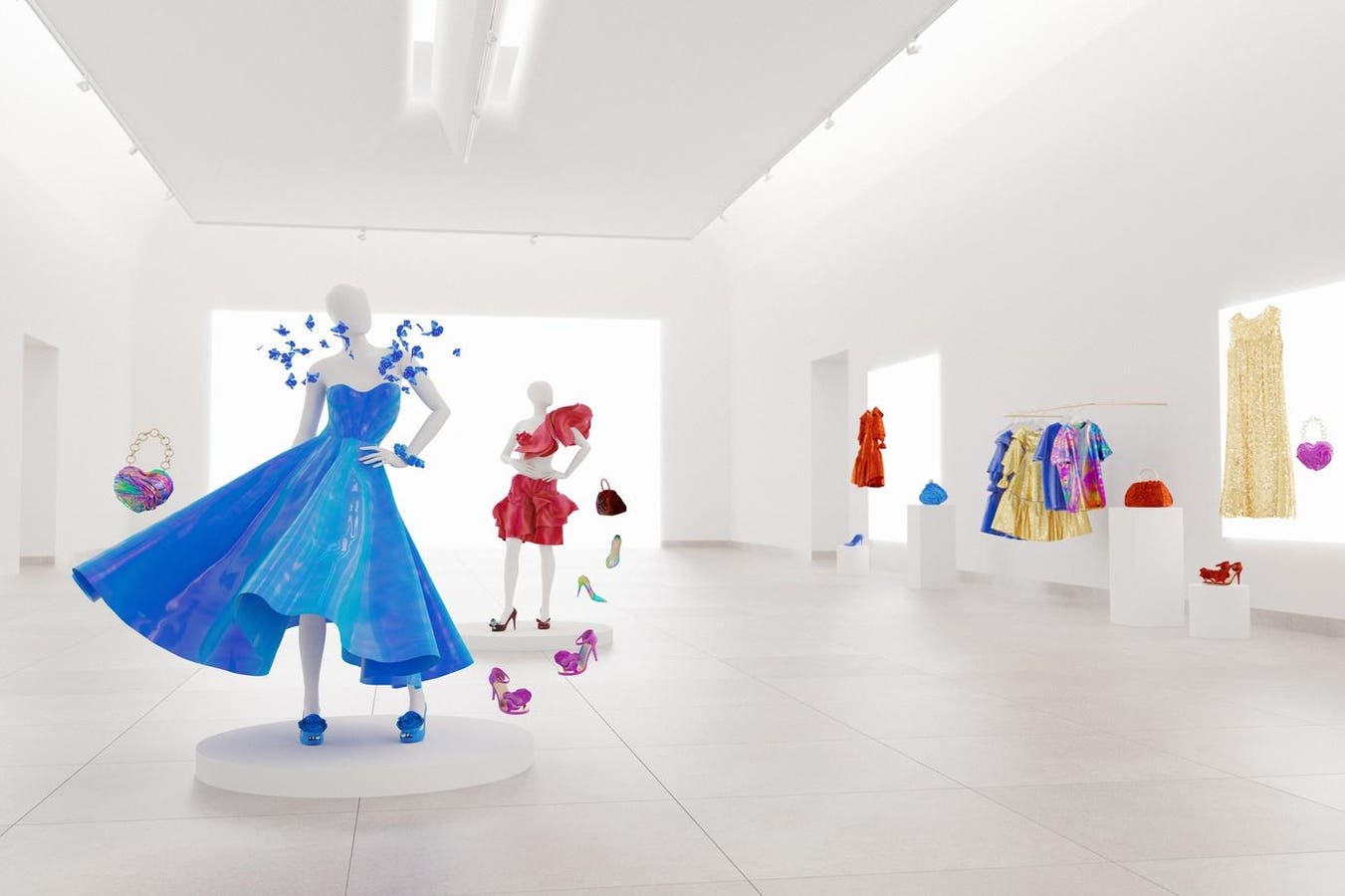Bain and Company just released its Spring 2024 “Luxury Goods Worldwide Market Study,” and the news is not good. The personal luxury goods market declined between 1% to 3% year-over-year in the first quarter at current exchange rates.
This follows a progressive slowdown in 2023. Luxury started the year strong with revenues rising 12% in the first quarter, followed by 8% in second quarter and a 3% drop in third quarter. It experienced a reprieve in the fourth quarter with the market up 2%, but the downward trend is clear.
Personal luxury brands are in a moment of crisis amidst waning consumer demand, lead author Claudia D’Arpizio stated:
“Many are navigating a momentary crisis, driven by macroeconomic pressures and a polarized customer base. As a narrative of resurgence and resilience emerges, luxury brands must rethink the way they build their value proposition to prioritize trust and connection with consumers.”
Bain remains hopeful that the downward turn is a momentary blip, not a long-term trend, projecting that the personal luxury goods market will grow from 0% to 4% in 2024 to reach $388 to $403 billion (€362 to €376 billion).
Rethinking The Narrative
However, the underlying message throughout the report suggests that the luxury industry is facing a profound rather than a momentary crisis. At the macroeconomic level, the industry must contend with restrained GDP growth, rising geopolitical uncertainties, curbed consumer confidence and shrinking disposable income. These aren’t going away any time soon.
Looking inward, Bain identifies multiple sector weaknesses, including a loss of creativity, a gap in supply and demand, cratering trust in luxury brands and stagnating business models that prohibit effective reaction to changing market conditions.
“Amid challenging macroeconomic pressures, luxury brands have also to face increasing competition, and a pressured ‘luxury equation’ in the eyes of consumers, linked with partial loss of creativity, gaps in between consumer demand and brands’ supply, and declining customer trust, along with unresponsive business models,” co-author Federica Levato shared in a statement to me.
“Therefore, brands must purposefully rethink their value propositions by maintaining and expanding their audience reach as well as continuing to deliver exceptional experiences, while nurturing their value propositions across all price points, to build lasting consumer loyalty that goes beyond mere desirability,” she continued.
In other words, luxury brands must innovate.
Innovation Gap
Being innovative is not a quality that immediately comes to mind when considering luxury brands. Yes, they introduce new collections season after season, but being creative isn’t the same as introducing innovative new concepts. Hermès isn’t about to touch the winning designs of its Kelly and Birkin bags or Louis Vuitton mess with its carefully crafted formula.
With luxury brands so invested in legacy and heritage, innovation – defined by McKinsey as “the ability to conceive, develop, deliver, and scale new products, services, processes, and business models for customers” – gets short shrift. It’s why luxury brands were so slow to adapt to e-commerce.
Since 2017, Unity Marketing, my company, has conducted an annual survey among luxury industry executives about the state of the luxury market as they see it. In the latest survey, nearly 450 luxury insiders were asked what qualities make luxury companies and brands resilient as the market ebbs and flows. The results show that being forward-thinking and cutting-edge are low on the list.
Being devoted to quality (71%) and craftsmanship (63%), having an authentic spirit (62%), commitment to service (56%) and artistry and design (52%) were top values, whereas only 32% saw an innovative perspective as key to brand and company resilience.
No matter what you call it – being innovative, forward-thinking or rethinking, in Bain’s terms – luxury brands need new approaches to solve new problems. They can’t rest on their laurels.
“As brands continue to face turbulence in the market, the winners will be those that rethink the way they craft and deliver their value propositions across multiple price points and touchpoints, growing their reach while building advocacy and loyalty among customers,” Bain’s Levato asserted.
Innovation Solutions
To the rescue comes a new study from the Kearney Consumer Institute (KCI), entitled “Demystifying Innovation.” Citing a disconnect between consumers wants and needs for service and product innovation versus company’s innovation goals – 56% of consumers believe innovation is done for the company’s not the customers’ benefit – Kearney argues companies can close the gap by reorienting innovation through a customer-driven approach that is balanced with business objectives.
Three steps are proposed, according to the report:
- Step one: determine what types of innovation consumers really want and use data and surveys to find ways to address those priorities.
- Step two: pick the right speed to market, letting consumers tell you if an innovation is immediately needed to save a brand or if you are better off perfecting the offering.
- Step three: decide how innovation should be delivered. Brands can take the lead on deciding if it should be through category diversification, changing raw materials, or leveraging new technology.
All of which is easier said than done, so I connected with KCI’s lead Katie Thomas for how this translates to the luxury market where the risks may be higher than for lower tier brands, since luxury brands must be cautious tinkering with their secret sauce.
Thomas believes rather than look to their peers, luxury brands need to copy innovation strategies from mass-market brands.
“Luxury brands can learn a lot from more mainstream brands,” she said. “Launching a line extension or updating what you already have isn’t incredibly innovative. After luxury brands were so slow to figure out digital, it’s time for them to rethink and evolve their definition of innovation where they can be successful without straying from the fundamentals.”
She offered four ways companies can rethink innovation specific to the luxury market.
On-Going Experimentation
Luxury brands need to let go of the reins a bit and give more room for experimentation in products, channels, technology and advertising mix. Thomas sees opportunities for luxury brands to take a broader lifestyle approach to innovation rather than be confined by their traditional product boundaries.
For example, LVMH has been in the travel/hospitality business since 1976 under its Belmond maison and it just recently made a strategic investment in the Orient Express brand, owned by Accor, to extend its reach into international hotels, river cruises and rail travel.
Thomas sees luxury houses could be challenged by young blood coming in who offer new approaches that may conflict with the traditional way-of-doing-things-here. However, they need to be granted the freedom to experiment and perhaps fail. But even if an experiment fails, there is much to be learned through the process.
“With more young designers coming through, like Jonathan Anderson at Loewe and Chemena Kamali at Chloe, they approach product development in a slightly different way that will be interesting to see how they impact these historic houses,” she said.
But it’s not just in the design departments where younger voices can contribute innovative perspectives and who need to be given room to make their mark. As Elon Musk said, “If things are not failing, you are not innovating enough.”
Feedback Loop From Shop Floor To Executive Suite
Structurally, Thomas also sees the need for better communication between employees at the organization’s front lines and those at the top.
“There needs to be a structured feedback loop so that input from staff serving customers gets funneled to the top of the organization,” she states and suggested that regular team meetings made up of senior executives and staff members from boutiques around the world would be a big step forward.
“One of the challenges is so much decision-making is data driven, but executives could glean a lot of important insights just by sitting around the table and talking things out,” she said.
More open communications from all corners of the corporation would help senior luxury brand executives avoid the garbage-in/garbage-out decision making trap, where they hear only from other senior executives, not the people who are actually doing the work on the ground floor.
Collaboration
Another avenue for innovation and experimentation is collaborations. “Collaborations are low risk, potentially high reward endeavors and the results shouldn’t be measured only by how many sales they bring in,” she observes.
By working with other organizations, luxury brands can get an inside look at the processes and systems those companies use that may have application in their way of working.
She points to Loewe’s recent collaboration with On Running for performance status sneakers as “unexpected,” but one where both brands learned from each other and their respective customers.
Loewe’s Jonathan Anderson is a master of collaborations, including his eponymous JW Anderson brand partnerships with Topshop and Uniqlo.
Commitment To Change
Perhaps the biggest innovation hurdle luxury brands face is inertia. “Luxury has a bit of the ‘If it ain’t broke, don’t fix it’ mentality. And for the most part luxury has been doing well lately,” Thomas observed.
But now, as Bain highlights, things are about to change and innovation – or rethinking, to use their term – is going to be needed.
LVMH Is On It
In closing, Kearney’s Thomas tips her hat to LVMH – Loewe is an LVMH brand – as being the industry’s leader in innovation, which has played no small part in its dominance in the luxury sphere.
Laetitia Roche-Grenet is LVMH’s vice president of Open Innovation, a post she’s held since 2019 after serving as Business Synergies director for three years and before that working with LMVH’s Fred brand as general manager Europe for four years.
Prior to joining LVMH, she was with Richemont’s Cartier for 11 years, working her way up from accessories product manager to retail, CRM, after-sales service and training director, so she knows luxury retail from the bottom up.
“Laetitia basically carved out this innovation role for herself. She literally has oversight over all of LVMH, not doing what each of the houses themselves do for specific innovation, but putting structure in place to drive innovation across the corporation. She saw a need and helped shape it,” said Thomas, who worked with Roche-Grenet at the recent ShopTalk Europe conference in Barcelona.
Roche-Grenet offers an innovative approach to career development. Maybe senior management won’t hang out a “help wanted” sign for an innovation executive, but the need is there and an enterprising staffer could step into the role that senior executives don’t even know they need.
“There has been such a proliferation in the luxury market with more brands than ever – just the sheer optionality that consumers have nowadays. This will encourage innovation because brands are going to need fresh ways to stand out from the crowd,” Thomas observes.
“It doesn’t mean luxury brands have to stray from their legacy or history but they must keep evolving and staying relevant,” she concludes.
See also:
Read the full article here





